Optical fiber splicing, also known as optical fiber splicing, is a process in which two separated optical fibers are fused into one by a special equipment, fiber splicing machine. Fiber fusion is not as simple as fusing two bare fibers together as people think, it is a series of meticulous work, very testing the patience and expertise of the operator.
1.What are the advantages of fiber fusion?
(1)The fiber welding loss is small (0.01 to 0.02);
(2)The fused optical fiber is basically not affected by the environment and has low maintenance cost in the later period.
2.What is fiber optic fusion splicer?
Optical fiber splicer is a kind of equipment that fuses two optical fibers together to form a long optical fiber by using high-voltage arc to produce high temperature above 2000℃, so that optical signals can be transferred from one optical fiber to another optical fiber with little loss.
According to different alignment methods, optical fiber fusion splicer can be divided into two categories: cladding alignment and core alignment.
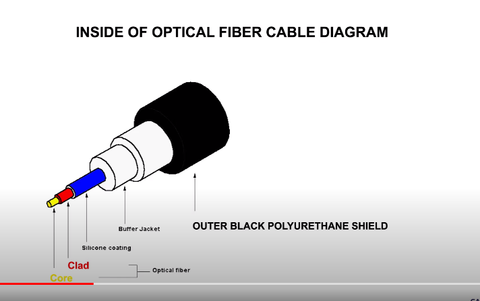
2.1 Cladding alignment
Cladding alignment is the cladding of optical fiber rather than optical fiber. The fiber loss after fusion and splicing is relatively large. It is suitable for short distance transmission, such as optical fiber to the home and other occasions with low requirements, so the price is relatively low.
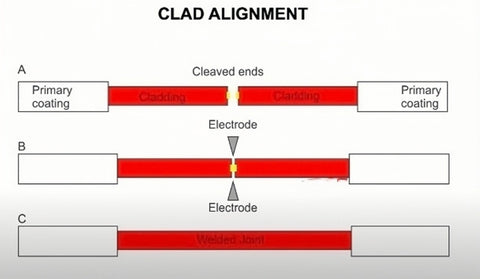
2.2 Core alignment
The core aligners are equipped with more advanced technology and better performance hardware, which can accurately identify the type of fiber and automatically select the matching welding mode and splice. The welding quality is higher and the loss is lower. It is suitable for all applications of optical fiber welding, so the relative price is higher.

Finally, if you need a core alignment welding machine, then fusion splicer BD-FS-41B is suitable for you, with high welding accuracy, high reliability, military grade, 7 seconds of welding, 18 seconds of heating, cost-effective. If you need a portable machine, I recommend you choose handheld BD-FS-35, 8 second splicing, 30 second heating, easy to use and easy to carry.


3.How to splice fiber optic?
The most efficient way to splice optical fibers is to use an optical fiber splicer. Fusion splicing machine is an automatic machine. You can set your own splicing parameters or use factory-recommended parameters.
Basically, there are nine basic steps to splicing fiber with a splicer.
(1) Firstly, open the fiber Fusion splicer to stand by.

(2) Insert the cooling tree in the back of the heating trough.

(3)Put on the fusion splice protection sleeve.
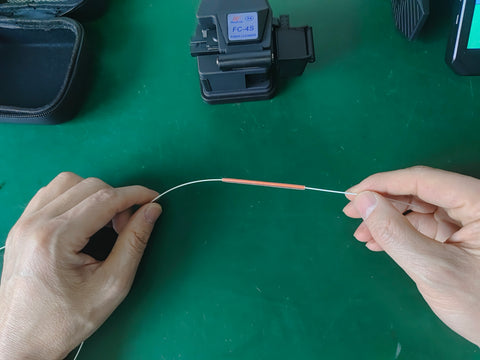
(4) Peel off the fibers.
Strip off all fiber coating, leaving only 125um of bare fiber, then use 99% isopropyl alcohol to clean the bare fiber.
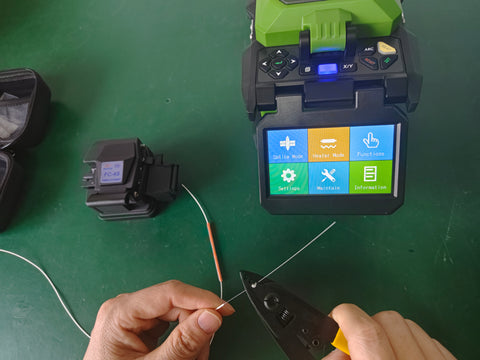

(5) Cut the fibers.
Open the fiber cleaver pulls the fiber into the fiber cleaver and press the yellow knob in the front to cleave the fiber.

(6)Put the fiber into the fiber holders of the fusion machine.
Press the Start button to start the fusion splicing.

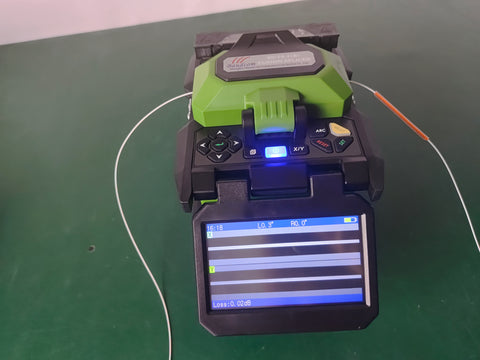
(7) Remove the fiber and reinforce it with a heater.
Take out the optical fiber from the welding machine, put the heat shrink tube into the heater to heat, the heating process is down after hearing the beep, then take out the optical fiber.

(8) Cooling the fiber. Place the heat shrink tube onto the cooling tray to cool down in around 10 to 20 seconds.

(9) Pull out the fiber.
Finally, if you want to know more about this process you can click on the video link below, I hope it helps you.

